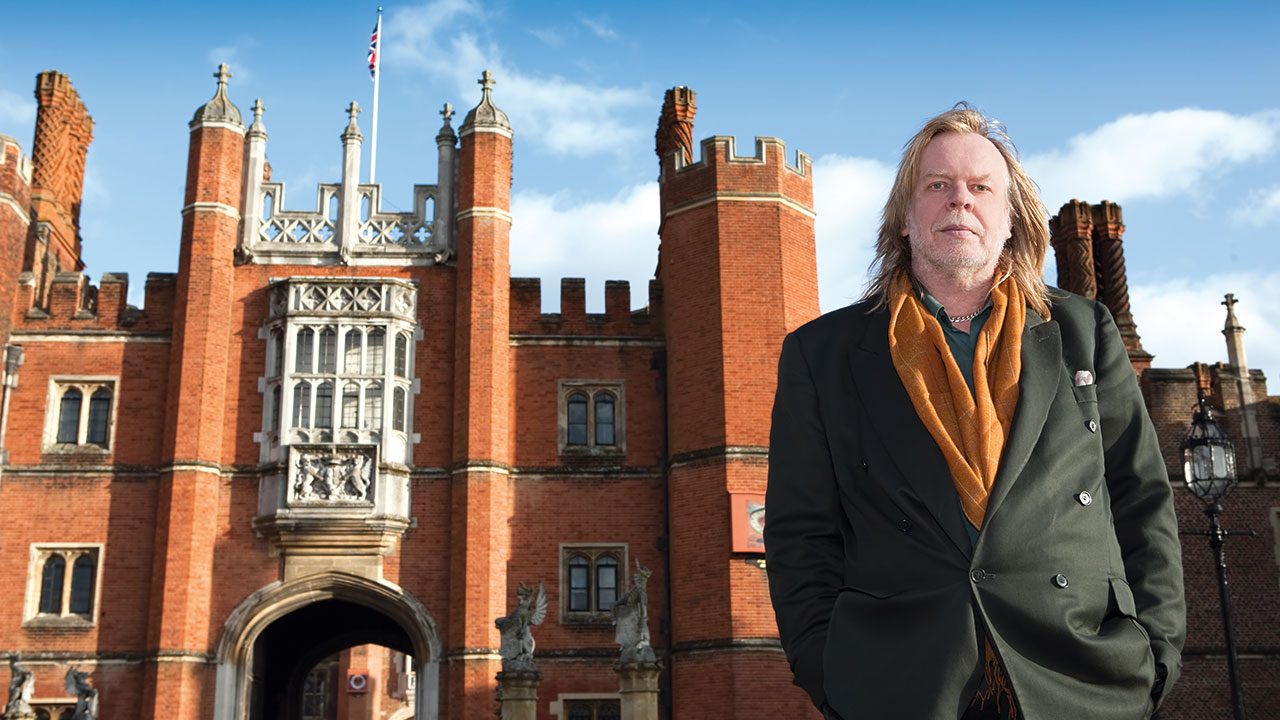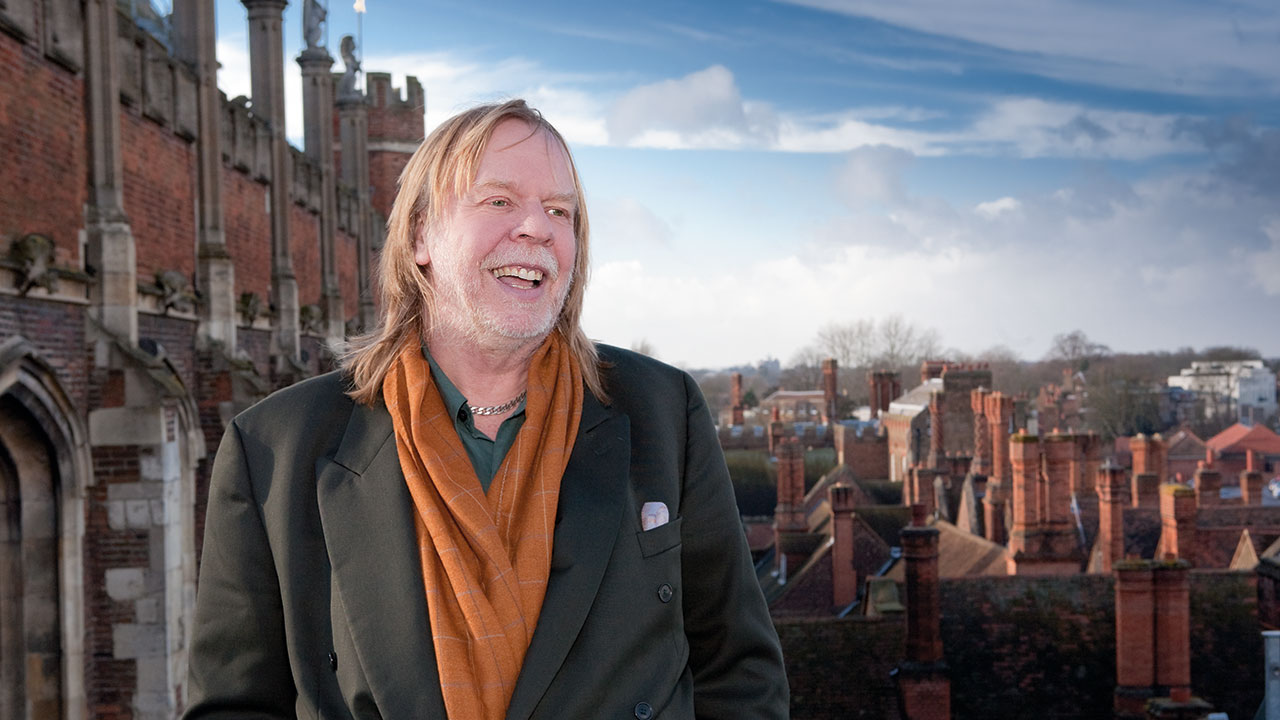Rick Wakeman, The Six Wives Of Henry VIII and Hampton Court
How Rick Wakeman created the Six Wives Of Henry VIII and how he took it back to Hampton Court in 2009

"It started in the same way as when I wanted to do a concert for Journey To The Centre Of The Earth in as much as it started very sensibly and then swiftly got out of hand. But believe it or not, that’s often the best way for things to happen.
“I’ll go back a bit in time – I actually signed the contract to do Six Wives… with A&M in 1970. I was with Strawbs who were signed to A&M Records. But in the late 60s and early 70s record companies started getting a hell of a lot smarter. In the 60s dubious management would sign a band to a label for a lot of money, record an album and then the band would split up. Back then when you signed with a band, you also signed individually, although the latter was just an option. It was all very fair. I’d joined Yes, recorded Fragile in 1971 and initially it came out on Atlantic in the UK and later in America. We were on tour in the States at the time and my manager Brian Lane said Jerry Moss from A&M Records had called and he’d like to see me. So we went down to the A&M lot, which was Charlie Chaplin’s old film studios. I hadn’t really ever sat in an executive’s office before, so they asked me if I wanted some coffee and I said 'I’d rather have a Scotch' – this was back in my drinking days and it was only nine in the morning.
“Anyway, Moss showed us round the lot and it was fantastic. And then he said that they had an option on me because of the Strawbs thing. He said “Word in the business is that Yes is going to be a very big band. If that’s so then we should probably put out a solo album”. I’d never really thought about it before, but it sounded like Christmas, so I said 'Yes please'. I got $12,500 as my advance, and at the time and rate of exchange came out at about £4,000. And he also said they’d like to give me a gift as it was my first trip to America, a signing on gift. So Brian says 'How much are you going to spend?' and it was about $500-$1000. We were only getting $200 a week on tour, out of which came all your expenses and food. Walking down to the lot I’d passed a used car lot and had seen this battered old 1957 Cadillac, for sale at $795. So I mentioned this and Jerry said 'I’ll have someone look at it'. Anyway, Brian calls me later and says 'They’re sending you round a hi-fi brochure, the car’s a wreck' and I say 'I don’t want a hi-fi, I want the car'. So they got me the car and shipped it back to England. I don’t have it anymore, I lost it in the first divorce. But that was my signing on fee, a limo. Weighed three tons and did about three miles to the gallon.
“A&M never asked me what I wanted to do, but as Yes were so busy they didn’t put me under any time constraints. They were a wonderful company. So anyway I wondered what to do –I didn’t sing, I didn’t have a band, and I didn’t know what to do. I had actually had a bit of a plan a few years before which was to do Journey… I’d always wanted to do that, but there was no way that was going to happen for my first record. So I was looking around for a concept, I’ve always loved the idea of concepts. And I remember being at an airport in Richmond, Virginia and they had a little store. This was in the days before portable cassettes so all you could do on a plane was read. I hadn’t brought a book along so I was looking at what they had in the store and there was one book called The Private Life Of Henry VIII, so I bought that. While I was reading about Anne Boleyn, a melody I’d written a few weeks before came into my head. And the more I read about her, the more this tune stayed in my head. And then I started reading about another wife and these sounds just came into my head and the concept started to come to the fore. I came back to England, read up on Catherine Of Aragon and decided that the music wasn’t supposed to be linked to factual matters but would be more abstract.

"Back then a lot of tapes were going missing from studios so everything got given a pseudonym to try and prevent them from going missing. And the pseudonym for Catherine Of Aragon was Handle With Care by The Joe Loss Orchestra. I had The Joe Loss Orchestra down for so many of my tapes, that when these studios closed down and they returned stuff to the rightful owner I never got my tapes back. Joe Loss’ widow probably has all of mine!
“Anyway I called up Chris [Squire] and Steve [Howe] and Bill [Bruford] and told them what I was doing and they were all up for it. So the recording of the first album was pretty much Yes minus Jon [Anderson]. It was quite a few months before I got back into the studio because Yes were so busy. But over the next six months or so we gradually put together all the music with various other musicians. It was all recorded on 16 track, which was fairly new at the time and there were a lot of problems involved. I remember very proudly taking the tapes down to A&M in London. And the American lawyer had been sent over to collect the tapes. He stood up and made a little speech and there were about eight of us in there. So I put the record on, played the first side and there was no reaction. And then I played the second side and there was even less reaction. They had a big cocktail cabinet in the corner so I hit that. And then the lawyer says 'Well, this is all sounding very good Rick, but it’ll be a big help when we can hear it with the vocals on'. And I said 'There are no vocals, it’s an instrumental keyboard album'. Like a lot of Americans he couldn’t talk quietly and he leant over to my publisher Derek Green and said 'Do you mean we’ve just paid $12,500 for a fucking piano player?' And Derek said 'Yes, but he’s a good piano player'. And then he turned back to me as I hadn’t heard it and said 'This is going to be tremendous' and left. So I’m left there all on my own because the boss had said to Brian, my manager 'I think we’d better have a chat'. To cut a long story short the two A&R guys came to see me and said they really liked it, that it was really off the wall. They said 'Don’t worry about those guys, all they want to hear is mainstream. We’ll give it a go for you'. But when we came to do the cover we had to do it in black and white because they wouldn’t pay for colour, but in the end we managed to get the sepia tone that was used on the album cover. But I didn’t care, I was just happy to have an album.
“It got mixed reviews, but what made me happy was that the public got it. Worldwide it’s sold about 14 million copies. I remember collecting my platinum discs from the head of A&M in the UK at Midem [yearly music conference in Cannes], and this was the bloke who hated it, and he stands up and says 'Every now and then something special lands on your desk. And the moment this landed I knew we had something really special'. I’m standing there absolutely gobsmacked and as he passes me he whispers 'Don’t say a word…'. But I had such a great relationship with A&M. It was always going to be called The Six Wives Of Henry VIII but the plan was to have a piece about Henry as well, called Defender Of The Faith. But when I went to record it the engineer’s like 'What are you going to do with it? Put it on a scroll in the middle?'. The album was full up, so it got ditched. The Defender Of The Faith we’re going to play now [one of three new pieces written especially for the Hampton Court show] isn’t exactly as it was back then. The two main themes are the same however.
Sign up below to get the latest from Prog, plus exclusive special offers, direct to your inbox!

Brian Lane asked me if I wanted to play a show and I said that yes I did. And he asked me where and I said 'Hampton Court'. And we made an enquiry, but back then Hampton Court, although it was open to the public, wasn’t anywhere near as open as it is today, and our request was tantamount to treason. Boy, did we get rebuffed. Brian was a great rock’n’roll manager and he made things happen but even this was beyond him. So he says to me 'Why not play the Royal Albert Hall?' but I was a stubborn bugger back then and said 'No, if I can’t do it at Hampton Court I’m not going to do it at all'. And then I was out on the road with Yes and then Journey… took over.
“But even though some of the Henry pieces have been played at shows over the years, but the thought of doing them as a stand alone concert hadn’t really occurred to me. A few people had asked me over the years but I didn’t really have the right reason for doing them. And then I got a phone call from a chap called Trevor Dunsford from Hampton Court Palaces. He said 'Do you know what next year is?' And obviously it was the 500th anniversary of Henry VIII’s accession to the throne and he says 'We’ve got a lot of events coming up, how would you like to put on The Six Wives of Henry VIII at Hampton Court?'. So there I am on the other end of the phone with a huge grin on my face, and I said 'I first put in a request in 1972. I’ve had some late replies to things, but this takes some beating'."
